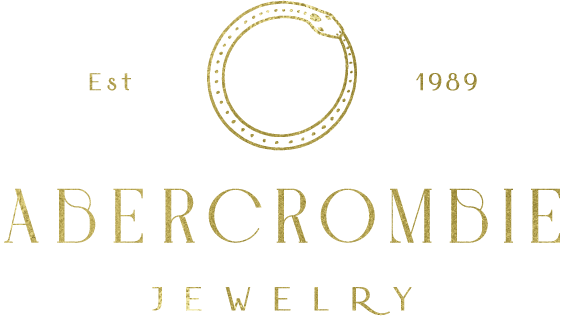Depending on various factors, diamonds can both gain and lose value over time. It’s important to note that both market conditions and the individual characteristics of the diamond itself influence the value of diamonds. Here are some factors to consider:
- Market Conditions
Like any other commodity, the value of diamonds can fluctuate based on supply and demand dynamics. Economic factors, geopolitical events, and consumer preferences can all affect diamond prices. If there is a high demand for diamonds and a limited supply, their value will increase. Conversely, prices decrease if demand decreases.
- Rarity and Quality
Diamonds are graded based on the “Four Cs”: carat weight, color, clarity, and cut. Diamonds with rare qualities, such as considerable carat weight, exceptional color (such as fancy-colored diamonds), high clarity, and excellent cut, are typically more valuable. Over time, if a diamond is recognized as rare and possesses desirable qualities, its value may appreciate.
- Diamond Certification
Diamonds certified by trusted gemological laboratories, such as the Gemological Institute of America (GIA), tend to hold their value better. These certifications objectively evaluate a diamond’s characteristics and ensure its authenticity, which can instill confidence in buyers and contribute to maintaining or increasing its value.
- Fashion Trends
Consumer preferences and fashion trends can influence the desirability and value of specific diamond shapes, colors, and styles. For example, if a particular diamond shape or jewelry design becomes widespread, it can increase the demand and value of diamonds that fit that trend. Conversely, if a particular style falls out of favor, it can decrease value.
- Secondary Market
When reselling a diamond, factors such as the condition of the stone, market demand, and potential buyer preferences come into play. It’s important to note that the resale value of diamonds is typically lower than the retail price due to factors like overhead costs and profit margins in the jewelry industry.
It’s essential to consult with a professional, such as a gemologist or an experienced jeweler, who can accurately evaluate the specific characteristics and market conditions to assess a diamond’s value.
Understanding Market Trends and Fluctuations
Like any other commodity, diamonds are subject to market trends and fluctuations. Economic conditions, geopolitical events, and changes in consumer behavior can influence demand and subsequently affect diamond prices.
While diamonds have historically shown an upward trend in value over the long term, it’s essential to consider short-term price variations due to market forces.
The Role of Rarity and Quality in Diamond Value
The rarity and quality of a diamond play a vital role in determining its value. The “Four Cs” – carat weight, color, clarity, and cut – are critical factors in evaluating a diamond’s worth.
Diamonds with larger carat weights, exceptional or fancy colors, high clarity, and excellent cuts are often more valuable. These rare and well-crafted diamonds appreciate over time due to their inherent desirability.
The Importance of Certification and Confidence
Certification from upright gemological laboratories, such as the Gemological Institute of America (GIA), is crucial in maintaining and enhancing a diamond’s value. These certifications provide an unbiased assessment of a diamond’s characteristics, including its quality and authenticity.
Buyers’ confidence in a diamond’s certification positively impacts its value and facilitates trust in the marketplace.
Impact of Fashion Trends on Diamond Value
Consumer preferences and fashion trends can influence the demand and value of diamonds. Specific diamond shapes, colors, and styles may experience fluctuations in popularity and subsequently affect their market value.
While some trends are transient, classic and timeless diamond designs often retain value regardless of fashion cycles. Understanding the evolving tastes of consumers and staying aware of market trends can help inform diamond purchases with long-term value in mind.
Exploring the Secondary Market Dynamics
When considering the value of diamonds over time, it’s essential to understand the dynamics of the secondary market. Factors such as the condition of the diamond, market demand, and buyer preferences come into play when reselling a diamond. It’s crucial to approach the secondary market with realistic expectations, as the resale value of a diamond is typically lower than its initial retail price.
Conducting thorough research, consulting with experts, and understanding the specific characteristics and market conditions can help navigate the secondary market effectively.
Do Diamonds Always Increase in Value?
Diamonds have historically shown the potential to increase in value over the long term. However, short-term fluctuations can occur due to market conditions and other factors. It’s essential to approach diamond investment with a long-term perspective and consider various factors influencing diamond value.
What Factors Determine the Value of a Diamond?
The value of a diamond is determined by several factors, including its rarity, quality (as assessed by the Four Cs: carat weight, color, clarity, and cut), market demand, certification, and fashion trends. These factors collectively contribute to establishing a diamond’s worth in the market.
Are Certified Diamonds More Valuable?
Certification from trusted gemological laboratories like the GIA can enhance a diamond’s value. Certification provides an independent evaluation of a diamond’s quality and authenticity, instilling buyer confidence. Certified diamonds are often more desirable in the market, positively impacting their value.
Can Diamonds Lose Value?
Diamonds can lose value if market conditions change, demand decreases, or diamonds are oversupplied. Factors such as a diamond’s condition, lack of certification, or being out of sync with current fashion trends can negatively impact its value. However, it’s important to note that high-quality and rare diamonds typically hold better value over time.
Should Diamonds Be Considered an Investment?
While diamonds can appreciate, carefully considering diamond purchases as a long-term investment is essential. Factors such as market conditions, individual characteristics of the diamond, and the costs associated with buying and selling diamonds should be considered. Diamonds can serve as a store of value, but they may not offer the same liquidity or returns as traditional financial investments.
